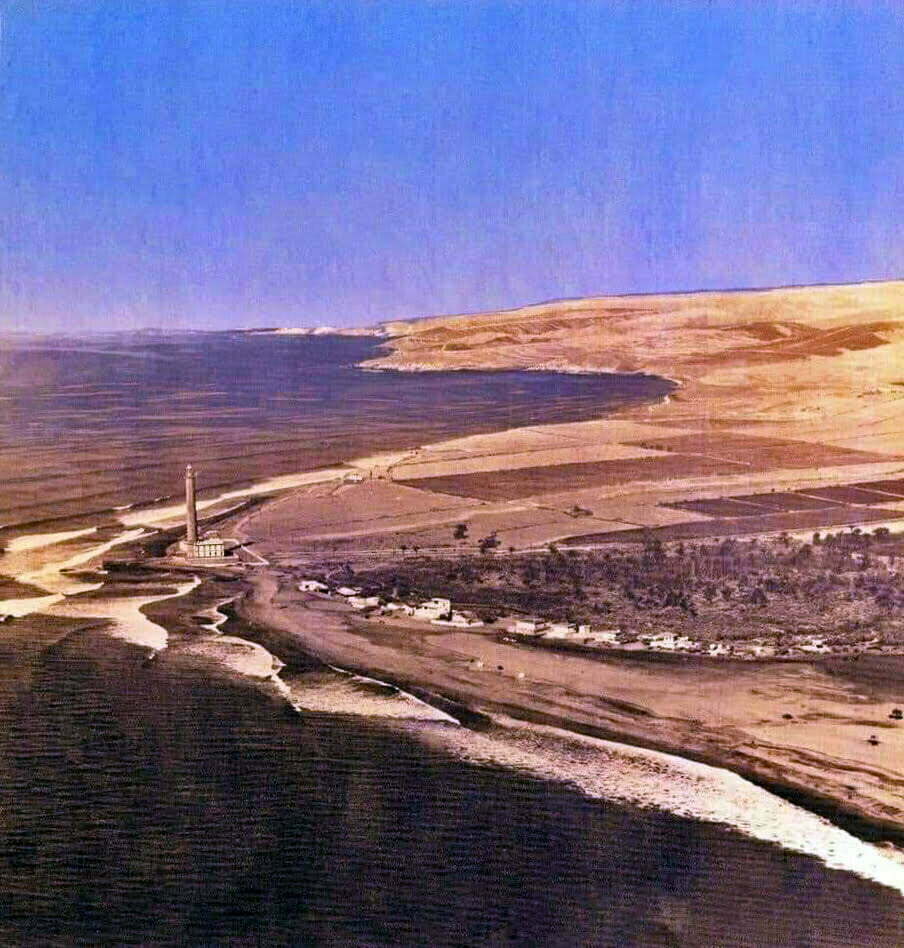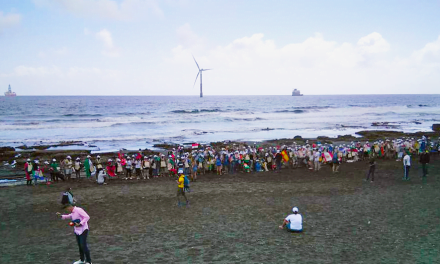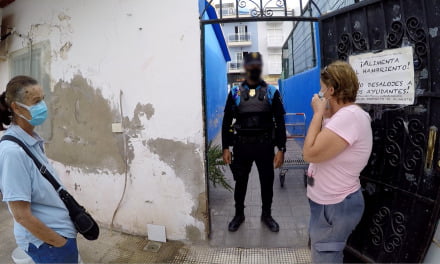The Maspalomas Lighthouse El Faro de Maspalomas is a 19th century lighthouse at the southern tip of Gran Canaria, in the Canary Islands archipelago. It stands at the Meloneras end of Maspalomas beach, Playa de Maspalomas, 4 kilometres (2.5 mi) southwest of the southern tip of the main resort town centre of Playa del Inglés, next to the famous area known as the Dunes of Maspalomas.
Image: Maspalomas 1960 – courtesy of Maspalomas Costa Canaria
The lighthouse is the most distinctive landmark in the resort and was the tallest masonry lighthouse in the Canaries at 56 m (184 ft) until it was superseded by the 59 m (194 ft) concrete Morro Jable lighthouse on Fuerteventura, completed in 1991.
With a focal height of 60 m (197 ft) above sea level, its light can be seen for 19 nautical miles, and consists of a pattern of three flashes of white light, over a period of thirteen seconds.
Conceived by the well-known local engineer Juan León y Castillo, (born in Telde, Gran Canaria, 1834-1912 ), who was one of the most outstanding personalities in public life on the island of Gran Canaria in the second half of the 19th century and the beginning of the 20th, whose many works were instrumental at a time when the administrative future of the Canary Islands Archipelago was forged, this luminous complex is made up of two main bodies, the lighthouse keeper’s house, and the tower. The rectangular house was developed from a traditional Canarian courtyard design, however, the four façades of the building are complemented by the eclectic fashion of the period in which it was built. The dwelling, attached to the base of the tower, acts as a plinth that counteracts the thrusts and forces produced by the tower itself.
The tower, presented to the sea, is a truncated conical cylinder that has an average diameter in the upper body of 6.2 meters, a height of 54.7 meters on top of which is located the lantern so that the lamp reaches a height of 60 meters.
The lantern itself is a glass dome 3.7 meters in diameter, covered at the top. Inside it are the optics, the reflectors, and the 1000-watt halogen lamp, which emits a slow white light flashing at a frequency of one plus two every 13 seconds. The flashes have a nominal night-time range of 19 nautical miles.
Located at the west end of Maspalomas beach, next to the Punta de Maspalomas, the dune field, pool and oasis of the same name; it is the primary landmark for the main tourist area on the south of the island. It is considered an emblematic symbol and one of the best-known monuments on Gran Canaria and the municipality of San Bartolomé de Tirajana. In addition to being recognised as an Asset of General Interest, it is one of the oldest lighthouses still in operation in the Canary Islands.
Now fully automated it operates using conventional electrical power connected to the public grid. It has rooms annexed at the foot of the tower, within a two-story building of eclectic style. This building is attached to the tower on its north side and is symmetrical in the arrangement of its doors and windows, the edges of which are outlined in stone. Its corners and a cornice that finishes off the entire upper part also make use of finely cut stone ashlars to harmonise the whole.
Above the entrance to the building, there is a small balcony made of tea wood and inside there is a Canarian courtyard patio that serves to give access to all the rooms and to the tower itself. The various rooms, warehouses, and the room that the lighthouse keeper once occupied, also house a generator and large batteries to guarantee operation in case of disconnection from or failure in the electrical network.
Today it is perhaps the most emblematic Tourist Information point and ethnographic exhibition space on the south of the island, and possibly the most photographed building on Gran Canaria.
Primary source: Faro de Maspalomas and Maspalomas Costa Canaria











